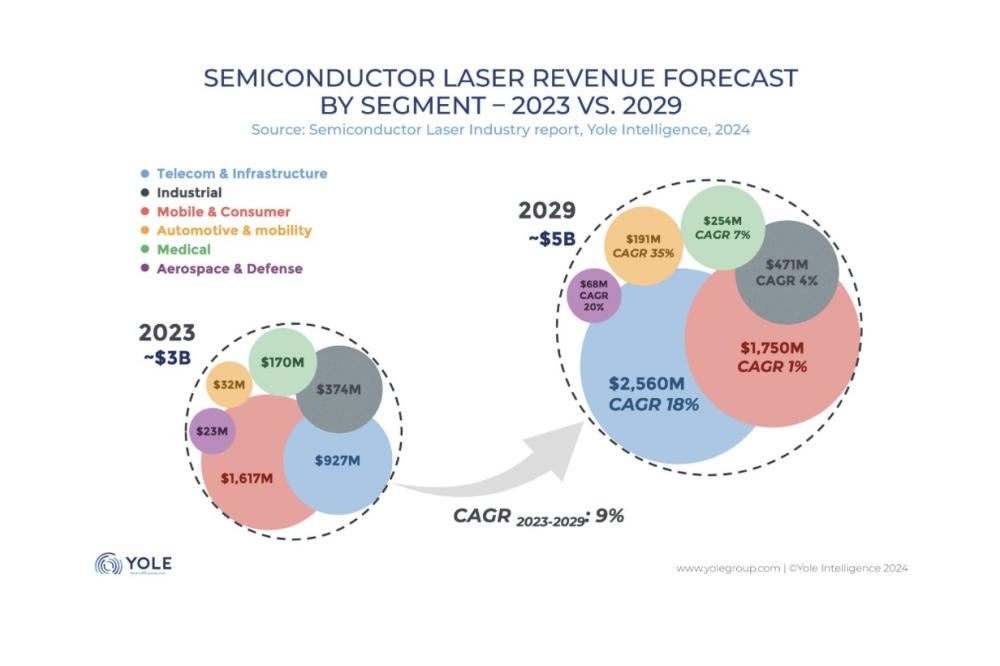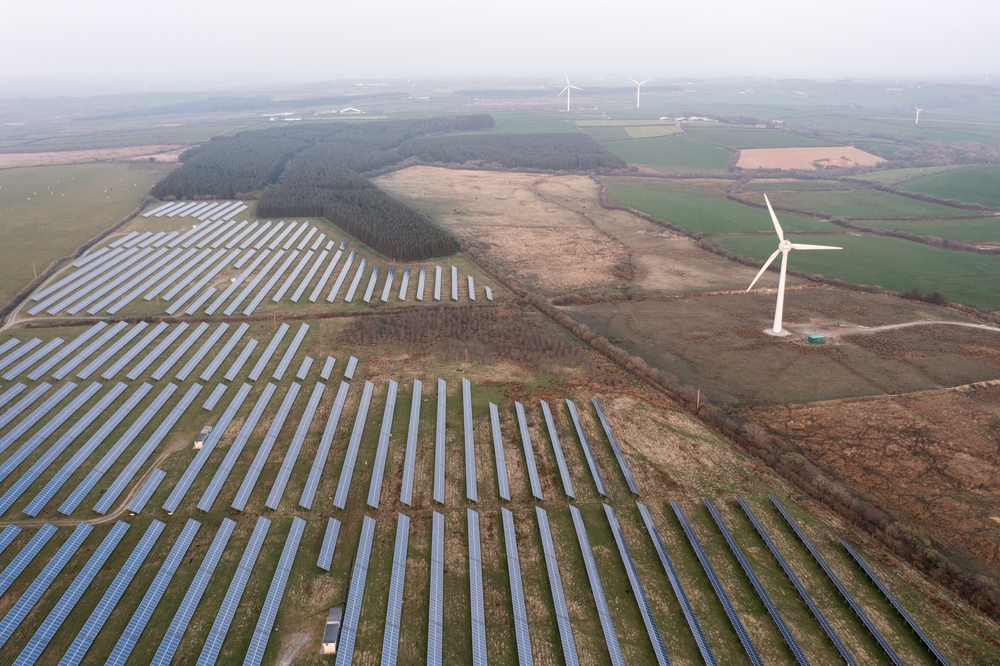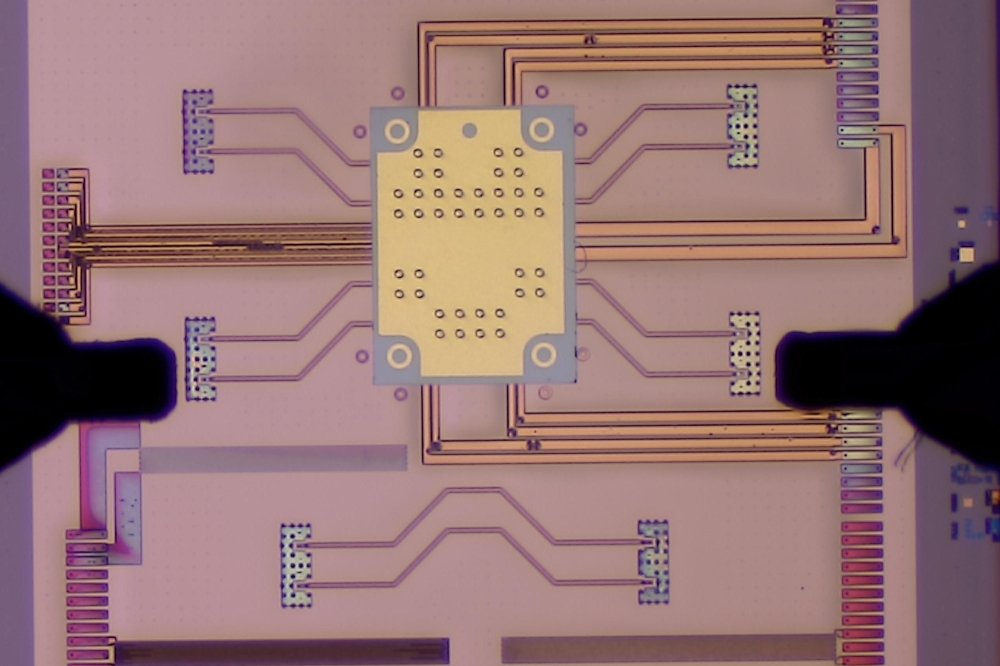Automation and integration will aid component recovery
It appears that most of this excess inventory has now been used or rendered obsolete. "Excess inventory has mostly been burnt off," says Jeff Montgomery, chairman and founder of ElectroniCast, "so a renewed flow of components is required to maintain even a depressed level of equipment production." Even so, recovery will be gradual and the bottom may not yet have been reached.
Many companies have had to reassess their strategies. In particular, component makers are addressing areas such as automation, integration and outsourcing to streamline their manufacturing. According to Dan DiLeo, executive VP of the Optoelectronics division of Agere, the demand for optoelectronic devices for optical networks is still growing, and this technology will only flourish if the costs are not a barrier to implementation. "The solution is to continue with innovation, automation and integration at both the module and the optoelectronic IC levels."
All set for recovery? Despite the industry s troubles, there is still an underlying demand for bandwidth. "The Internet has continued to grow very significantly, even in the last 10 months," says Vivienne Hudson, VP of optical networking at Nortel Networks. "Every carrier in North America or Europe has told us that their traffic is growing at 100% per year. The fundamental problem is that although it is growing very fast it is not very profitable, and all the profits are still due to voice services. So the challenge is to create new services that will allow those profits to be generated."
William Shreve, director of Agilent s Systems and Solutions Lab, says that component makers have a role to play in helping carriers achieve profits from data traffic. "Carriers are seeking to add services and are looking to the component manufacturers to help them reduce costs by providing more and more component integration and automation."
Whatever happens, recovery at the component level will occur slowly. RHK predicts that the combination of price declines for components with flat or slightly declining shipment volumes is likely to result in a fall in revenues during 2002. The most likely scenario is an 8% drop to $4.25 billion next year, with double-digit growth returning in 2003. ElectroniCast is more optimistic after talking with its clients. "In the past couple of months, we ve seen very positive signs in the shape of equipment vendors receiving quotation requests," says Jeff Montgomery. "Growth will return slowly, and will accelerate in the second half of 2002. Growth in component shipments could return to 25-30% in 2003."
Others continue to urge caution. Analysts at Morgan Stanley Dean Witter have released a report suggesting it is too early to predict a recovery for the optical components industry. The problem is that although inventories are being reduced, it does not necessarily follow that demand will pick up again. The analysts argue that a much more likely scenario is a flattening of both component supply and system demand, with gradual recovery taking place. Morgan Stanley is advising investors to take care when buying optical component stocks. "We would recommend investors look for companies with critical mass, sophisticated manufacturing methods, strong intellectual property and attractive valuation," say the analysts, citing Agere Systems as an example of a company fitting all of these criteria.
An even less positive view comes from Bear Stearns, which looked at capital expenditure (capex) estimates for US service providers. For these companies, capex spending has dropped significantly since the start of 2001 and could be down by as much as 20-25% in 2002. The Bear Stearns analysts believe that the bottom for equipment vendors will only be seen when the carriers revenue growth stabilizes, and that it could be an extended period - perhaps 2 years - before renewed growth in the equipment sector. Automation and new strategies The current downturn has created an opportunity for component makers to streamline their manufacturing operations. Nortel has sold off huge quantities of fab equipment and consolidated its operations while JDS Uniphase has closed plants and turned to outsourcing. These and many other companies have shed thousands of staff hired during periods of huge component demand, when it was necessary to focus on time-to-market and time-to-volume rather than cost-efficient, high-yield manufacturing techniques. Now companies are being forced to rethink, and the automation of assembly, test and packaging functions is becoming a key area.
"Companies are reducing their reliance on manual operations in two ways, either by introducing automation or outsourcing some of their production," says ElectroniCast s Montgomery. "Major manufacturers have the resources to be able to adapt while start-ups can select one route or another from the outset - for medium-sized companies, the problems are more significant."
Many larger companies such as Agere, Alcatel, Nortel and JDS Uniphase have invested heavily in automation. JDSU recently signed a development alliance for optical component and module manufacturing with Adept Technology, which makes factory automation systems. However, fully automated processes are still not in place. "We ve seen automation in the manufacture of laser diodes and some in fiber attachment," says Agilent s Shreve. "However, automation tends to follow standardization, and companies won t build large automation systems unless there is a significant customer base. Many manufacturing systems are semi-automated and still require a lot of human operators. What we want to avoid in future is the philosophy of hiring more people to ramp up component production volumes."
Ironically, new start-ups that have focused from inception on automation and creating a common product platform may actually be in a stronger position than their larger, more established counterparts. Even so, some emerging component manufacturers have been forced to switch their development resources away from next-generation products in order to focus on making products that customers want right now. Tunable laser manufacturer Bandwidth9 is currently focusing on tunable spares rather than network provisioning equipment, because carriers believe the former application can make their networks more cost-efficient. Similarly, Novalux recently introduced new lower-power, low-cost pump lasers for metro networks because there was limited demand for the high-power devices that the company had previously commercialized (see Components on show at ECOC). According to ElectroniCast, New Focus is concentrating on integrating multiple functions into one package and reducing its R&D spending on new technologies since its customers have narrowed the areas they are interested in discussing. Outsourcing Along with automation, component manufacturers can seek to reduce costs by moving to low-wage regions or by outsourcing production. Contract manufacturing through electronics manufacturing services (EMS) providers is a mature feature of the electronics industry, but in the optoelectronic field the EMS providers are on a steep learning curve. However, outsourcing is becoming more prevalent; for example, Celestica has a contract to provide JDSU with optical subassembly services for optical amplifiers. Also, WL Gore is outsourcing production of its nLighten family of VCSEL-based modules to Flextronics, a Singaporean contract manufacturer that also makes mobile handsets for Ericsson and Siemens. Integration Integration is a key method to reduce the cost of optical components (see "Background information") and takes two forms. One is the monolithic or hybrid integration of multiple functions onto the same chip, while the other involves squeezing more components into the same module. The monolithic vs hybrid debate continues to rage. "Wafer-level processing of active components is the best way forward, and this is becoming more prevalent," says Agilent s Shreve. "However, many of the optical functions cannot be performed with the same materials. In the manufacturing area, I think we ll see hybrid integration of electronics and optics in the near term, followed by a push towards an all-optical solution in the long term, featuring electronics and optics integrated on the same substrate. We will also see more use of standardized packaging." Venture capital funding Another feature of the downturn is a reduction in venture capital funding. However, the optical components sector has suffered much less than the VC market in general, and many companies were funded during 2001 (see table). "The venture community still has money to spend," says Melanie Swan, director of financial services at RHK. "Now VCs have more time to evaluate and scrutinize potential investments." A solid, rational business plan is now key to raising cash, and for second- or third-round funding a list of customers and a reasonable, sustainable demand for products are essential.
According to Swan three types of company are more likely to receive investment funding. The first is companies with real products that have already gained a foothold in the marketplace, while very young companies may have enough cash to survive until their products hit the market in 18-24 months. Finally there are the "walking wounded" - the candidates for merger or acquisition.
Although it is hard to gain a consensus on when conditions will improve in the fiber-optic component market, everyone at least agrees that next year there will be a lot fewer optical component makers in the industry. Background information Integration: benefits will take time to be realized Based on the experiences of the microelectronics industry, integration is a key next step for optical components, and is expected to lead to reduced cost, power consumption and size, plus greater reliability and functionality. Microelectronics moved from mounting discrete components onto a board and wiring them together to integrating millions of transistors onto the same piece of silicon.
Although the comparison is useful, it can easily be pushed too far. The mainstream silicon industry uses a single material, while optoelectronics lacks an obvious platform. The silica-on-silicon approach is being used by a number of companies, notably Bookham and Kymata/Alcatel, while InP offers lots of material advantages and is being investigated by established manufacturers, as well as start-ups such as ThreeFive Photonics, Intense Photonics and MetroPhotonics. "InP is the only material with the required level of integratability ," says Lawrence Gasman, president of market research firm Communications Industry Researchers (CIR). "In theory it allows the integration of actives and passives, and electronic and optical devices. However, InP suffers from problems such as small wafer sizes, and is much less mature than silicon."
The primary reason for integrating components is to reduce costs. "At the moment, integration has very little to offer in terms of direct cost reduction," says Gasman. "Because there are no standards, integrated components are not plug-and-play substitutes for discretes, so an equipment vendor must take into account the cost of designing the integrated product into the system." CIR has estimated that integration might reasonably be expected to lead to a 12.6% reduction in capital costs by 2005 - not quite the improvement that some might hope for, but nevertheless significant.
Integration is also expected to have a large impact on operational costs and to improve the performance:cost ratio of equipment to a level that will open up high-volume markets, although there are no signs of this at present. Integration has the potential to reduce power requirements and insertion losses, but current products struggle to achieve the performance available using discretes.
A more compelling incentive at present appears to be the reduced footprint of integrated components. However, Gasman believes that integration will start to become more commonplace, for a number of reasons. Yields, which are now often extremely low, should improve rapidly as the industry adopts automated manufacturing techniques, and prices will decline as yields and volumes increase. More functionality per chip will reduce the cost per function and also the footprint, although equipment vendors are skeptical about the reliability of multi-functional chips, and have concerns about how to design them into their products. Big equipment companies such as Alcatel, Nortel and Lucent have all begun to think through what integration is going to mean for them, says Gasman - Alcatel s purchase of Kymata earlier this year is evidence of this interest. "We should start to see next-generation equipment containing integrated optics by the end of next year," he says. "What you re not going to see is the optical equivalent of a microcomputer. They ll use some integrated optics together with conventional technology. The industry is on a fairly slow path towards integrated optics - unless there s some major breakthrough, but I m not sure what that would be."































